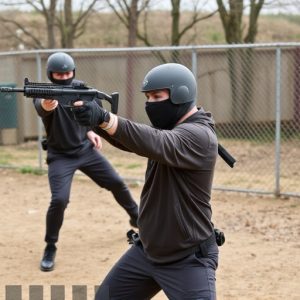Compact Stun Guns vs Tasers: Features, Benefits & Differences
Compact stun guns with flashlights offer a powerful and portable self-defense solution. They combine…….
Compact stun guns with flashlights offer a powerful and portable self-defense solution. They combine a strong electric shock with illumination, making them ideal for personal safety in low-light or dark environments. While Tasers and stun guns both use electricity to incapacitate targets, they differ in delivery methods: Tasers use probes for a longer range, while stun guns create muscle spasms through an electric field. The choice between them depends on individual needs, with compact stun guns being more accessible and cost-effective for civilians seeking personal defense. Always check local laws regarding the legality of stun guns.
“In the world of personal defense, Tasers and stun guns stand out as powerful tools. Understanding the nuances between these devices is crucial for informed decisions. This article delves into the basics of Tasers and stun guns, highlighting their distinct features. We explore compact stun guns with flashlights, offering a unique combination of power and utility. By comparing their applications and legal considerations, we guide readers in choosing between a Taser and a stun gun, ensuring they make the best decision for their safety needs.”
- Understanding Tasers and Stun Guns: A Basic Overview
- Compact Stun Guns with Flashlight: Features and Benefits
- How Tasers Differ from Traditional Stun Guns
- Applications and Legal Considerations for Each Device
- Choosing Between a Taser and a Stun Gun: Key Factors to Consider
Understanding Tasers and Stun Guns: A Basic Overview
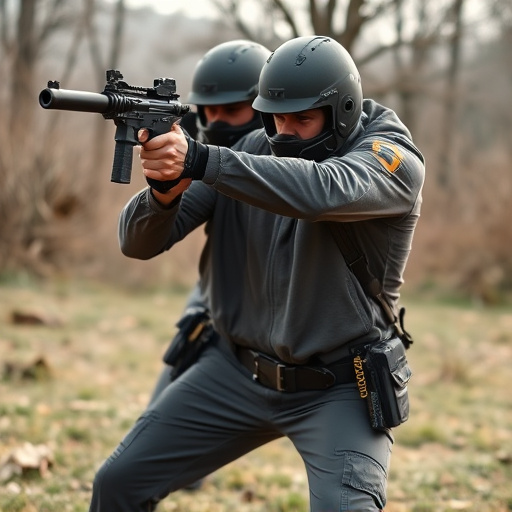
Tasers and stun guns are both non-lethal weapons designed to incapacitate an opponent temporarily, but they operate on different principles and have distinct features. Tasers, formally known as Conductivity Energy Devices (CEDs), use electrical current to disrupt muscle control in the body, causing temporary paralysis. They typically consist of two probes connected to high-voltage electrodes that fire into the target, delivering a powerful electric pulse. On the other hand, stun guns, or electronic control devices (ECDs), create a strong electric field using a high-voltage, low-current discharge, which disrupts nerve impulses in muscles, resulting in muscle spasms and temporary incapacitation.
One notable difference lies in their design: compact stun guns with flashlights often resemble traditional firearms or flashlights, making them more concealable and user-friendly for self-defense purposes. These devices are easily portable and can provide both a powerful shock and illumination in dark environments. Understanding these fundamental differences is crucial when choosing between a taser and a stun gun based on specific needs, such as ease of use, range, and power output.
Compact Stun Guns with Flashlight: Features and Benefits
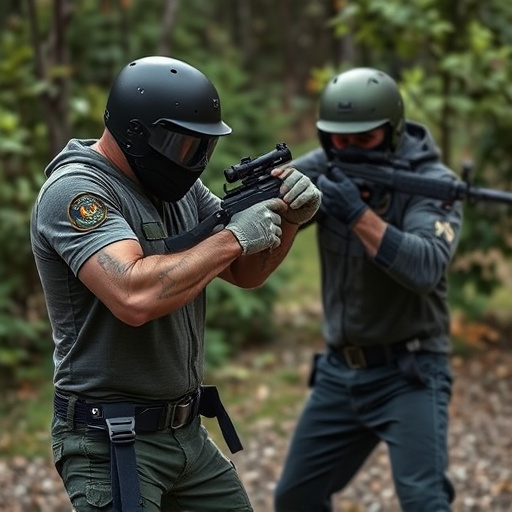
Compact stun guns with integrated flashlights offer a versatile self-defense option for those seeking a discreet and powerful device. One of their key features is size—these weapons are designed to fit easily in pockets or small bags, making them accessible whenever needed. This portability is a significant advantage, allowing users to carry protection without drawing attention.
Additionally, the built-in flashlight not only aids in low-light situations but also serves as a deterrent. It provides visibility and illuminates potential threats, giving users an edge during encounters. The combination of a stun gun and flashlight in a compact package is a game-changer for personal safety, offering both immediate defense and enhanced situational awareness.
How Tasers Differ from Traditional Stun Guns
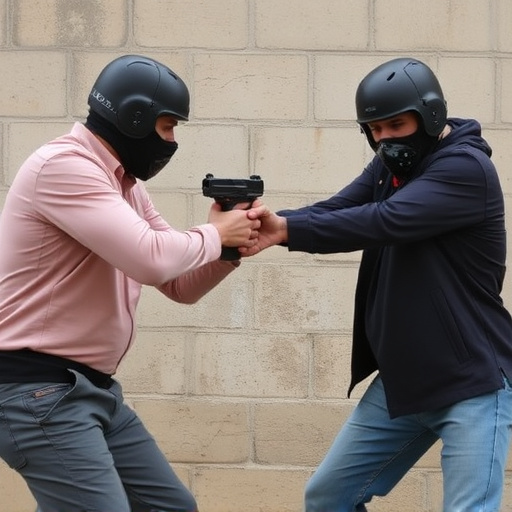
Tasers and stun guns both serve as non-lethal self-defense tools, but they operate on distinct principles. Tasers, also known as Conducted Electrical Weapons (CEWs), fire small probes that deliver an electric current to disrupt muscular control, rendering the target temporarily incapacitated. This innovative design allows users to disable aggressive individuals at a safe distance without causing severe injury.
In contrast, traditional stun guns produce a high-voltage, low-current electrical pulse through their contacts. These devices usually take the form of compact stun guns with integrated flashlights, making them easily portable and accessible for personal protection. While both tools can cause immediate pain and disorientation, tasers tend to have a longer range and are more effective in unpredictable situations due to their ability to fire probes that attach to the target’s clothing or skin.
Applications and Legal Considerations for Each Device
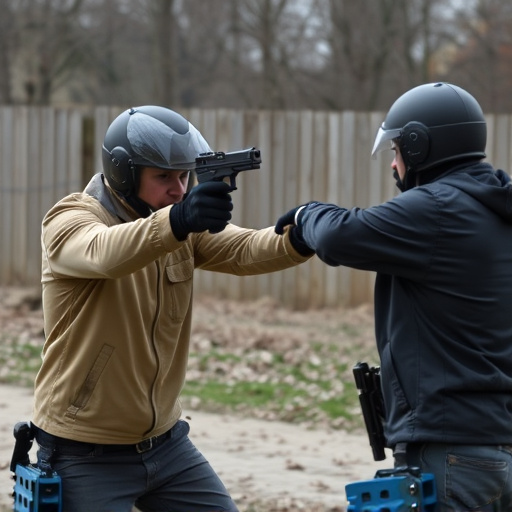
Tasers and stun guns both serve as personal defense tools, but they have distinct applications and legal implications. Tasers, or Conducted Electrical Weapons (CEWs), fire two thin probes connected to cables that deliver a high-voltage, low-current electrical pulse to immobilize a target. They are designed for law enforcement use in situations where force is necessary but lethal force is not warranted. In many jurisdictions, officers are required to render first aid after tasing and must follow specific protocols for their use.
Stun guns, on the other hand, emit a powerful electrical discharge that temporarily disables an opponent through overstimulation of nerves. While they are often marketed for personal safety, stun guns typically have shorter ranges and lower voltage outputs than tasers. Legal considerations for stun guns vary widely; some regions classify them as firearms, requiring permits or registration, while others treat them as non-lethal defense devices with less stringent regulations. Compact stun guns with integrated flashlights are popular choices for individuals seeking a portable self-defense option, but users should always familiarize themselves with local laws and restrictions.
Choosing Between a Taser and a Stun Gun: Key Factors to Consider

When deciding between a Taser and a stun gun, several key factors come into play, each offering unique advantages and considerations. One significant distinction lies in their purpose and functionality. A Taser is designed primarily for law enforcement and self-defense situations, utilizing electric current to temporarily incapacitate a target with multiple probes. On the other hand, stun guns, often compact with integrated flashlights, are more commonly used by civilians for personal protection against potential attackers.
The size and portability of these devices also differ, with stun guns typically smaller and easier to carry discreetly, making them appealing for those seeking a concealed means of self-defense. Additionally, cost is another critical factor; Tasers tend to be more expensive due to their specialized nature and technology, while stun guns offer more affordable options without compromising effectiveness.
When choosing between a taser and a stun gun, considering your specific needs is key. While tasers offer a more comprehensive range of options, including advanced features like digital control and multiple shot capabilities, stun guns remain popular for their compact designs, especially models that incorporate a flashlight. For self-defense in diverse scenarios, both devices have their merits, and understanding their unique differences can help you make an informed decision based on your personal safety requirements. Remember, legal considerations vary, so always check local regulations to ensure compliance when carrying either device.

